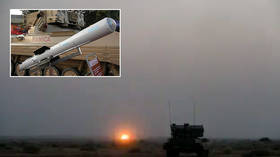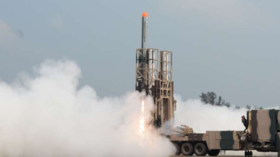India completes successful test of its own 3rd-gen anti-tank missile, in bid to end reliance on foreign weapons

Amid ongoing border tensions with China, India’s defense agency has completed the final test of its third-generation anti-tank missile, which is now set to be deployed by its army.
On Thursday, India’s Defence Research and Development Organisation (DRDO) announced that the Nag anti-tank guided missile (ATGM), intended for use in the four-kilometer range, has successfully completed its final trial and is now ready for deployment to the frontline.
Final user trial of 3rd generation Anti Tank Guided Missile (ATGM) NAG was carried out today on 22 Oct 2020 at 0645 hrs from Pokhran range. The missile was integrated with the actual warhead and a tank target was kept at designated range. pic.twitter.com/GZ4oJWyNWs
— DRDO (@DRDO_India) October 22, 2020
In response to continuing skirmishes with its neighbors China and Pakistan along the disputed borders, the DRDO has been actively testing domestic missile technologies in an effort to reduce its reliance on foreign defense equipment suppliers.
The third-generation ATGM, equipped with an imaging infrared seeker and integrated with a warhead, has, over several years, completed 10 trial launches, each of them declared successful. The missiles are now slated for production by the state-owned manufacturer Bharat Dynamics and subsequent deployment.
The test of the Nag missile is the latest in a string of trials performed by the DRDO in the past month. The agency had earlier tested the supersonic surface-to-surface strategic missile Shaurya, as well as the Nirbhay cruise missile.
Before the success of the Nag, India had long lacked credible anti-tank weapons and was forced to purchase them from overseas partners. Last year, when tensions with Pakistan flared up, it made an emergency purchase of around 200 Spike anti-tank missiles from Israel, all of them immediately deployed along the so-called Line of Control in Jammu and Kashmir to bolster defense against Pakistan.
India has been facing a two-front threat for decades, amid unresolved issues about disputed borders with neighbors Pakistan and China. In May, conflict flared up again in the Ladakh region, with armed skirmishes alongside the Line of Actual Control, India's de facto border with China, though the two countries are currently in active talks to de-escalate the tensions.
Like this story? Share it with a friend!














